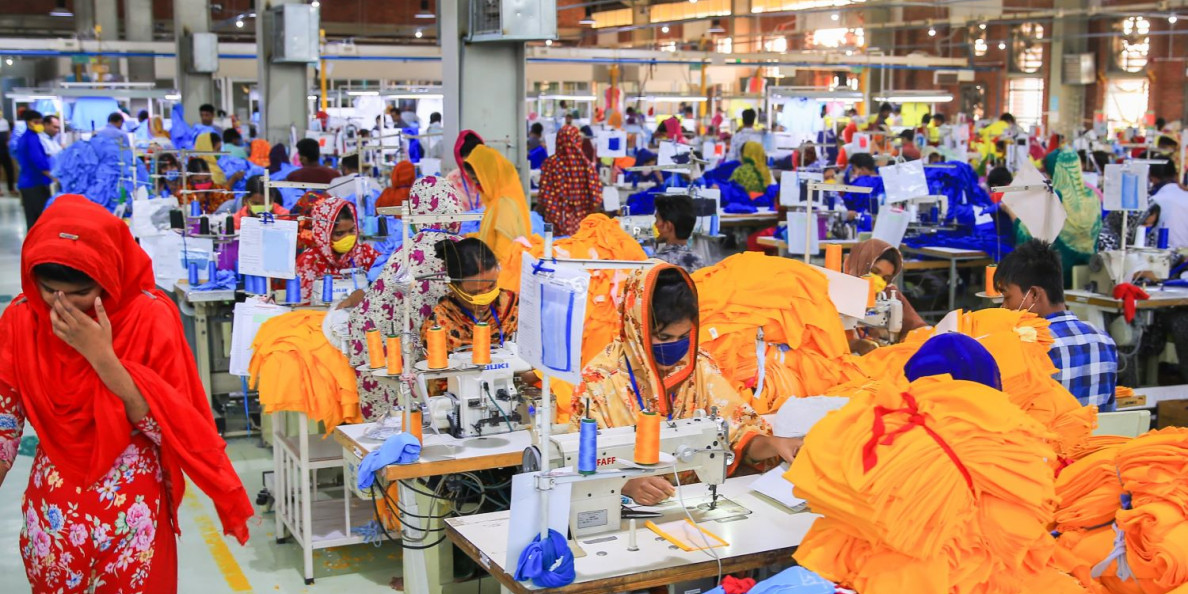Iftekhar Mahmud
Bangladesh had global renown for producing cotton from the phuti karpas variety. Till the 1900s, this particular cotton yarn was used in weaving the world famous muslin. Although muslin became extinct long ago, Bangladesh has reemerged in the global cotton market in a different way. This year, Bangladesh, followed by China, has become the second largest importer of cotton.
In 2020-21 fiscal, Bangladesh imported 7.6 million bales of cotton, spending around Tk 250 billion (25,000 crore). A United Nations report, citing the import data, says that Bangladesh would become a major player in the global cotton market by 2030.
How Bangladesh grabs 2nd position
The Agricultural Outlook 2021-2030–-published in July—by the Organization for Economic Cooperation and Development (OECD), and Food and Agriculture Organization (FAO), presents detailed information about the cotton market. Outlook terms Bangladesh as a potential big player in the global cotton trade, citing the growing production of cotton fabric and ready-made garments in the country. And the reasons behind this are the trade war between China and the United States, textile production policy shift in China and Indonesia, and increased production of artificial fibre.
Following the growing demand, production of cotton has been increasing in Bangladesh. However, local production of cotton shares very little of the total demand.
In last 10 years, cotton production increased two fold in the country. The local cotton production rose to about 150,000 bales annually in last four years. The amount of local production is less than 5 per cent of the total demand. Hence, Bangladesh is meeting the demand of cotton by increasing the import volume.
Speaking about the issue, Bangladesh Cotton Development Board executive director Alhaz Uddin Ahammed told Prothom Alo, “Once the cultivation of cotton was a household agriculture in Bangladesh. However, cultivation of gossypium that produces cotton for textile industries is still very limited. The board has been identifying the potential croplands as well as motivating and supporting the farmers for cotton cultivation.”
The OCED-FAO Outlook predicts that like Vietnam, Bangladesh’s cotton import would grow to 18 per cent of global trade by 2030. Superseding China, the two other Asian countries would become big players in the cotton market. Due to the US-China trade dispute, Bangladesh and Vietnam have received more work orders for cotton textile and readymade garments (RMG). Between 2008 and 2021, the production of cotton fabric has increased to 40 per cent in Bangladesh and 28 per cent in Vietnam.
More local production of cotton in future
There is hope for steadily increasing production of cotton in Bangladesh. US-based international cotton trade analyst Cotton Connect has conducted several studies on cotton production potentialities in Bangladesh. The studies suggest that Bangladesh can possibly increase cotton production from 150,000 to 1 billion bales minimum. Concerted efforts and a wide-range of cotton cultivation across the Barind track and char-land of Bangladesh can make production of 2 billion bales possible.
Bangladesh director of Cotton Connect, Harunur Rashid told Prothom Alo that harvesting cotton takes more time than paddy and other crops. Despite having arable lands much, farmers seldom cultivate cotton as it takes six to seven months for harvesting. Government and non-government collaboration certainly can produce 2 billion bales of cotton annually in the country.
Research on cotton
Seven researchers from Bangladesh Meteorological Department (BMD), International Rice Research Institute, US-based IIED, International Centre for Climate Change and Development, South Africa and India, have conducted a study about the impacts of climate change on cotton production.
According to the study, climate risks of cotton cultivation could be manageable. Citing the Bangladesh weather as favourable for cotton cultivation, the study recommends for production of climate-resilient and weather-tolerant cottonseeds.
One of the authors of the study, Bazlur Rashid, also a BMD meteorologist, told Prothom Alo, “History proves that production of good quality cotton is possible in Bangladesh. Quality cotton had been cultivated here before the British rule. Now, we have to innovate weather-tolerant as well as international standard cotton variety.”
Benefits of cotton
According to FAO, around 75 countries produce cotton. Bangladesh is ranked 40th among the cotton producing countries. India, China, US, Pakistan and Brazil are the leading cotton producers. Between mid-July and mid-October, cotton is cultivated only on 0.52 per cent of land in Bangladesh.
Besides fibre, edible oil, oilcake, and biomass also come from cotton cultivation. Fifteen to twenty per cent of cottonseeds contain edible oil which is low cholesterol, protein-rich and nutritious than soya bean oil.
Cottonseed oilcake contains 24 per cent high protein, 20 per cent high fat and 40 per cent crude fibre–the best fodder for livestock and fish farming.
According to agriculture ministry, Bangladesh produced 177,000 bales of cotton in 2019-20 fiscal. The ministry has taken a cotton cultivation strategy to cover 20 per cent of the demand by 2041. Primarily, 250,000 hectares of land have been marked for the cotton cultivation.
* The original report appeared in the print and online editions of Prothom Alo, has been rewritten in English by Sadiqur Rahman.


